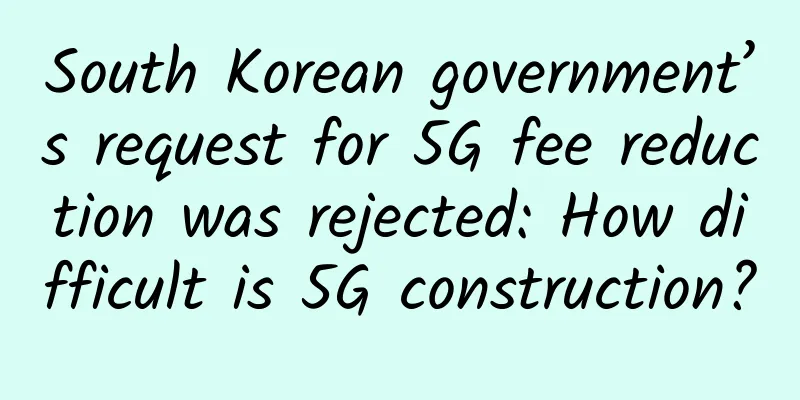One year after the license was issued, China's 5G commercialization yesterday, today and tomorrow

|
A lot can change in life in a year, and for the 5G industry, a year is enough time for huge changes to take place.
June 6, 2019, is a day that will go down in history. One year ago today, the Ministry of Industry and Information Technology issued 5G commercial licenses to China Telecom, China Mobile, China Unicom, and China Broadcasting Corporation, which means that China's 5G commercial timetable has been advanced from 2020 to 2019, half a year earlier than market expectations. China's "early certification" for 5G commercial use has made the entire communications industry and even all walks of life excited and boosted morale. After quickly calming down the excitement, the industry immediately started the practical mode of 5G commercial use. So, in the first anniversary of 5G license issuance, what important changes and significant progress has the industry experienced "yesterday"? What is the current status of the 5G industry "today"? What new challenges will it face "tomorrow"? Yesterday’s impressive results: 5G commercial deployment achieved “China speed” In 2019, it can be said that 5G has entered its first year of commercial use. In particular, after China issued 5G commercial licenses on June 6, 2019, the curtain was officially opened on China's 5G network construction and commercial use; then, a grand 5G commercial launch ceremony was held at the opening forum of the 2019 China International Information and Communication Exhibition on October 31, and the three major operators also officially released 5G commercial tariff packages, marking the official launch of China's 5G commercial services. Since the issuance of 5G commercial licenses in June last year, one year after 5G commercialization, the development of the 5G industry has made great progress in network construction, terminal models, application innovation and other aspects. On the network side, my country is accelerating the commercialization of 5G, and more than 200,000 5G base stations have been put into operation. Among them, China Telecom actively promotes the joint construction and sharing of 5G with China Unicom. At present, the two sides have opened more than 100,000 5G base stations and strive to complete the construction of 300,000 5G base stations by the end of the year; China Mobile has built 140,000 5G base stations, and China Mobile strives to reach 300,000 5G base stations by the end of this year. It can be seen that the construction of 600,000 5G base stations by the end of this year is a foregone conclusion. On the terminal side, the number of 5G mobile phone models has increased significantly, the experience has been continuously improved, and the price has been continuously reduced, providing users with more choices in the terminal aspect as they move towards the 5G era. According to data released by the China Academy of Information and Communications Technology, in April 2020, 16.382 million 5G mobile phones were shipped in the Chinese market, accounting for 39.3% of the mobile phone shipments in the same period; 22 new 5G models were launched, accounting for 45.8% of the number of new mobile phone models launched in the same period. From January to April, the cumulative shipments of 5G mobile phones in the Chinese market reached 30.441 million, and a total of 65 new models were launched, accounting for 33.6% and 47.4% respectively. According to C114, the price of 5G mobile phones has also dropped from nearly 10,000 yuan in the early days of commercial use to the current minimum of about 1,500 yuan. The real 5G thousand-yuan machine is also expected to be launched in the second half of the year, which will greatly reduce the terminal threshold for users to use 5G. If the number of 5G package users may be inflated (some users only use 5G packages but still use 4G phones), then as more and more 5G phones reach users, it also means that more and more consumers are accessing 5G networks and services through 5G terminals and becoming true 5G users. On the application side, in addition to the consumer sector, the industry is also constantly exploring how 5G can enable the digital transformation of the industry. 5G has already had some innovative use cases in autonomous driving, Internet of Vehicles, remote mechanical control, smart factories, etc. During this year's epidemic prevention and control period, the application of 5G education and 5G medical care also allowed everyone to see the powerful capabilities and huge potential of 5G in industry applications. It can be said that the first anniversary of 5G license issuance has delivered a pretty good report card, and the "China speed" has been achieved in the deployment of 5G commercial networks. In addition to operators, all parties in the industry chain, including equipment manufacturers, module manufacturers, mobile phone manufacturers, chip companies, testing manufacturers, application and content providers, and industry 5G innovative application representatives, have made great contributions. Today's good state, 5G has gained a new "identity" and a new "pattern" When the first anniversary of 5G licensing came, people inadvertently discovered that 5G is very different from previous generations of mobile communication technology. First of all, different “identities”. 2G/3G/4G mainly focused on communication between people and were basically only about the communication industry itself, but 5G has been given too many expectations. As new infrastructure such as 5G begins to take the stage of macroeconomic regulation, 5G, which is expected to leverage a trillion-dollar market in the future, has once again become a hot topic. 5G has become a new economic growth point, which is not only reflected in its own network construction investment, but also in the fact that the information and communication industry to which 5G belongs is a strategic, basic and leading industry that fully supports economic and social development. As an important enabling technology for the new round of digital transformation, 5G is closely integrated with industries such as big data, artificial intelligence, and the Internet of Things, and will also jointly promote the high-quality development of my country's economy in the new era. Especially at the beginning of 2020, China's goal of "stable development" of the economy was negatively affected by the epidemic, and the country needed to take effective measures to hedge against the downward pressure on the economy. After acquiring the new identity of the protagonist of "new infrastructure", 5G investment will not only directly bring about the rapid development of telecommunications operations, equipment manufacturing and information services, especially opening up new granaries for equipment vendors who have been hungry for a long time, but will also drive various industries to expand investment in information and communication technology applications through the linkage effect between industries, and enhance the investment-driven incremental effect. Secondly, a different “pattern”. Previous generations of mobile communication technology were limited to competition between each operator, but the competitive landscape in the 5G era truly interprets what "co-competition" means. Since China Telecom and China Unicom announced 5G co-construction and sharing on September 9 last year, China Mobile and China Broadcasting Corporation have also signed a 5G co-construction and sharing cooperation framework agreement recently. So far, the "2+2" pattern of the four domestic basic telecommunications operators in the 5G market has been officially formed. This complex and delicate relationship of both competition and cooperation has also become a new highlight. In general, the new CP combination and the new market competition pattern can alleviate the investment pressure of 5G construction to a certain extent, improve network utilization efficiency and accelerate the digital transformation of the industry, and the users will ultimately benefit. It can be said that today, one year after the license was issued, the overall condition of China's 5G is very good. There are still many challenges tomorrow, and the ten-year industry cycle has just begun No matter how brilliant the achievements were yesterday, or how satisfying the current situation is, tomorrow is still unknown. For 5G, which is to support the development of the mobile communications industry in the next decade, this is just the first step in a long journey. There will be more opportunities in the future, but there will also be many challenges. Challenge 1: How to improve network coverage? Although operators have accelerated network deployment, they still need to continue to accelerate and increase the construction of 5G networks to attract more users to switch to 5G as soon as possible. In particular, in indoor scenarios such as residential areas, office buildings, and subways, the deployment of 5G small base stations must be increased as soon as possible to ensure user experience. Challenge 2: How to reduce costs and increase efficiency? The number of 5G base stations and the deployment cost are several times that of 4G. It is crucial for operators to make accurate network investment plans. From the perspective of cost and carbon emissions, energy consumption is one of the biggest challenges facing the current mobile communications industry. In the 5G era, due to the higher deployment frequency band and greater base station density, 5G's energy consumption is several times that of 4G. In the future, how to introduce innovative technologies such as AI artificial intelligence and automated network operations to make 5G's power consumption comparable to 4G is the key to reducing costs for operators. Challenge 3: What should a 1,000-yuan 5G mobile phone look like? Although high-end 5G mobile phones above 4,000 to 5,000 yuan are the concentrated embodiment of the terminal manufacturers' innovation capabilities and brand value and the trump card for obtaining lucrative profits, 1,000-yuan 5G mobile phones are the key to the real popularization of 5G. In fact, mobile phone manufacturers have already started a price war in advance. The lowest 5G mobile phone on the market is about 1,500 yuan. In the future, when the price of 5G mobile phones drops by about 500 yuan to the real 1,000-yuan price range, can the comprehensive experience of 5G mobile phones in communication, photography, battery life and other aspects be guaranteed? This really tests the ability, wisdom and conscience of mobile phone manufacturers. Challenge 4: Where are the killer applications? Use case innovation and business model innovation are the key to whether 5G can achieve great development. In the ToC field, 5G currently has almost no disruptive application innovation except for enabling consumers to use mobile applications frequently in terms of faster network speed and VR/AR. In the ToB field, although 5G has some use case pilots in the digital transformation of vertical industries such as autonomous driving, Internet of Vehicles, remote mechanical control, and smart factories, whether the current network can achieve millisecond-level latency and actual network performance close to the theoretical peak rate (including uplink and downlink) in the future is the key to all walks of life truly embracing 5G. Of course, this also depends on the final freezing time of the next stage of 5G standards (R16 and R17), industry manufacturers' further progress in products and solutions, and cross-industry integration and innovation. In summary, on the first anniversary of China's 5G license issuance, 5G's "yesterday" has achieved remarkable results, 5G's "today" is in good shape, and 5G's "tomorrow" still needs to work hard! |
<<: The industry chain works together to make great progress in 5G messaging
>>: 5G has not been affected by the COVID-19 pandemic, and commercial deployment is accelerating
Recommend
Google officially joins the O-RAN Alliance to promote the development of telecommunications technology
According to foreign media reports, Google announ...
In the third quarter, the penetration rate of fixed broadband households in my country reached 59.6%
[[177287]] According to the "China Broadband...
The three major operators are deploying the next generation of the Internet of Things and have determined three specific directions
In 2017, the Internet of Things industry ushered ...
If you don’t know IPv6, you are out of date. What is IPv6?
When using mobile apps, have you noticed that the...
China Mobile may withdraw all 3G networks by 2020, but terminals still need to support GSM
At the Global Terminal Summit held recently, Chin...
An article brings you Lwip network port interface netif
[[395199]] 01Introduction to Network Interface In...
Comparison of several mainstream wireless technologies in the Industrial Internet of Things
Large-scale production scenarios involve a large ...
Spiderpool: How to solve the problem of zombie IP recycling
In the Underlay network, how to recycle zombie IP...
What’s going on? Can I use 5G network without a 5G package?
A few days ago, the 5G logo appeared on the mobil...
Ruishu Information was once again selected as a cloud security example vendor in Gartner's "2022 China ICT Technology Maturity Curve Report"
In July 2022, Gartner, a global authoritative IT ...
How 5G frequencies affect range and speed
Experts say that while 5G technology is a huge im...
Liu Liehong from the Ministry of Industry and Information Technology: my country's 5G base stations account for more than 70% of the world's total
On May 26, the 2021 China International Big Data ...
NexusBytes: US VPS monthly payment starts from 2 USD, Singapore/Japan VPS monthly payment starts from 3.2 USD, large hard disk VPS monthly payment starts from 4 USD
The tribe once shared information about NexusByte...
How are 5G charges calculated: This is what the operators say. Are you willing to pay more?
An operator insider confirmed to IT Times, "...
The three major operators have completed the deployment of IMS network interconnection and 2G/3G network withdrawal has been accelerated
Recently, the three major operators completed the...









